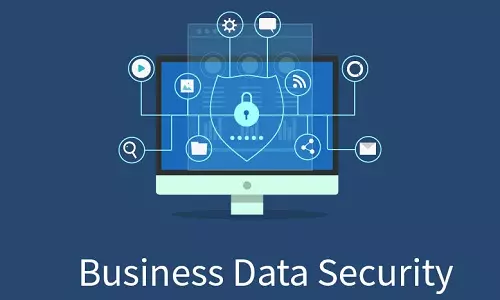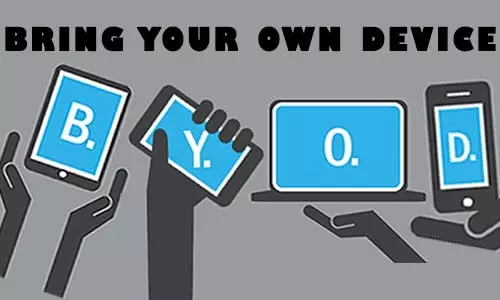IoT - Internet of Things: Definition and Examples of IoT
Definition of IoT. Examples of IoT devices in Healthcare and transport. IoT security and IoT privacy concerns. What's the future of IoT?

I bet that you have come across a watch lets you know the number of steps you have made any particular day. Even better, a fridge that sends notification to alert you that your favorite brand of cheese needs restocking.
Everyday, we come across conversations of smart toasters, smart fridges, smart coffee makers, smart collars for your pets, smart this and smart that. Every device around us is becoming ‘smart'. But wait… how is a device identified as 'smart'? It all starts with a common denominator, the internet.
Definition of IoT
Internet of Things (IoT) is basically a network of billions of physical devices connected together using the internet connection. Traditionally, the internet consisted of a network of laptops, desktop computers and mainframes. Overtime, more devices have been introduced into the network with more sophisticated features and notably smaller in size. As of 2020, 10 billion IoT devices had been connected. These numbers are expected to grow to more than 22 billion by 2025. Each succeeding device is enhanced in terms of efficiency, performance and security. An IoT device is as simple as a light fixture that can be lit through an app on the phone, to long-distance driverless cargo trucks.
These devices are able to collect and process data more accurately, seamlessly and efficiently communicate with each other, and be able to make real time intelligent decisions. These devices are able to collect unstructured data from people and other devices, process it, communicate with other devices or even store data for future reference. For instance, a smart watch collects data that it doesn't know how to interpret. However, when this unstructured data is sent to your phone, a program analyzes this data and generates a report of steps you have taken today, your heart rate, and more. When this information is used in app, it comes becomes your daily personal trainer. The possibilities of this data become endless.
Examples of IoT
Currently, technological companies such as Google have come out and introduced devices that collect data either as a convenience feature or as a solution. In addition to smartwatches and fitness wrist bands, smart devices including televisions, eyeglasses and smart key fobs have been developed. Further, the introduction of smart homes into people's home plans has been a recent talk with sample smart homes being unveiled in technological forums. Such homes are aimed at interconnecting the basic devices used in a home through the internet and executing comprehensive tasks with minimum human effort. Smart devices are aimed at automating tasks such as light and temperature control, be able to fetch data such as weather status and provide recommendations and even analyze real time traffic data and provide alternatives and recommendations.
On highlighting the devices' pillar of the Internet of Everything, an emphasis should be made on how these devices will communicate and process data. Most of the smart devices are currently not equipped to process loads of data in real time. However, with a strong and stable network connection, smart devices can upload raw data and download processed information in less time as opposed to processing this data itself. The presence of robust machine learning programs and analytics tools has helped push the boundaries of data processes. Companies such as IBM have come strong on providing devices that can process data at lightning speed compared to traditional devices through technologies such as Quantum Computing. Quantum computers are built on the concept of quantum mechanics and are able to make millions of calculations per second which is far much faster with the supercomputers today. With smart devices being able to communicate directly to such superior computers, they will be able to fetch and communicate raw data and be able to collect processed and analyzed data.
IoT in Vehicles
Driverless vehicles are a trending topic for companies with giant automobile manufacturers and providers of artificial intelligence (AI) solutions racing against each other to provide a flawless driverless automobiles. A driverless vehicle is aimed at creating an automobile which will use artificial intelligence to navigate roads and transport passengers as well as goods. To achieve this, devices in the vehicle should not only be able to use the global positioning system (GPS) but also be able to communicate with other devices in other vehicles, road markers, traffic monitors as well as traffic control devices to manage efficient navigation.
Picture your vehicle alerting you of an incident 3 miles down the road. It is possible a vehicle identified the incident, uploaded the notification to a cloud server, which was downloaded autonomously by your vehicle. Your 'smart' vehicle then calculates the appropriate responses and alerts you of the best option. It might even adjust the vehicle's operational settings to allow safe navigation pre and post the incident. This is IoT's applicability in the transport sector.
IoT in Healthcare
Further, microchips are being redesigned and made superior in terms of data collection, data processing, and advanced communication despite their size. Microchips are aimed to collect data from non-computer elements including people and the environment. Such devices are built to be able to collect raw data and communicate it to devices with the capability of processing and analyzing this data. In the coming days, microchips can be implanted in people to enhance characteristics such as eyesight and brain functions. The latter is a crucial development which can enhance thought and improve human problem-solving skills. Further, such chips will help treat brain injuries and diseases that inhibit the brain's efficient execution of tasks such as Alzheimer's. Further, microchips will be implanted to enhance neural pathways to be able to operate a prosthetic with the mind as would a normal body part ("Brain-implantable biomimetic electronics as the next era in neural prosthetics - IEEE Journals & Magazine", 2001). Such advancement in medical engineering will help solve problems that have existed for decades and even help in replacement of missing or weak limbs.
IoT Security and IoT Privacy
With such robust and advanced connectivity with devices that are well integrated into our daily lives arises the question of security. As stated herein, IoT includes devices fitted with sensors to collect data for an intended and usually pre-disclosed use. However, as consumers, are we sure that the data collected is only for our use? IoT security is a practice aimed to keep not only the IoT devices safe but also the data collected. There is no absolute way of guaranteeing that the devices are secure. However, modern IoT is based on complex architecture that provides solutions to cybersecurity concerns. Further, as consumers, it is our hope that IoT manufacturers spend equal resources of design and development on device security. Further, static security programs will have to be switched to AI-driven security processes that adapt to new threats and deploy appropriate mitigation measures.
What is the Future of IoT?
If you have come across a smart device, you can attest that IoT is clearly in its infancy stages. Technological components feature a design that is half the size but 10 times more powerful. We are experiencing exponential growth in technology, a factor that puts the future of IoT on an unpredictable course; however, it is interesting to imagine the possibilities.






